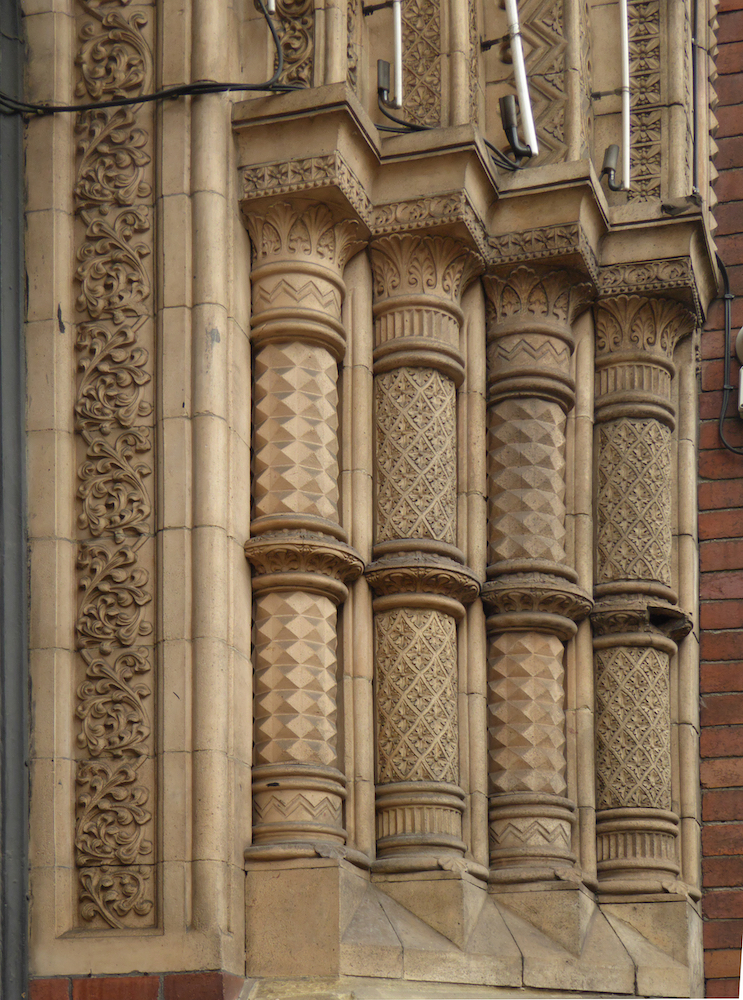Photographs by the author. You may use these images without prior permission for any scholarly or educational purpose as long as you (1) credit the photographer and (2) link your document to this URL in a web project or cite it in a print one. Click on them to enlarge them.

(Former) York Institute of Art, Science and Literature by Walter Green Penty (1852-1902). 1883-85. This red-brick and terracotta building is Grade II listed, and stands on the west side of Clifford Street, which was opened in 1881. The building is in "a kind of Romanesque perhaps inspired by Waterhouse's Natural History Museum ... topped by delightful pinnacles in the form of small open cupolas with conical roofs"; it also has "[n]icely lettered terracotta panels” (Pevsner and Neave 199). Suitably enough, since it has the word "Literature" on the corner bay, it later become the public library, but now, somewhat less suitably, it houses a night club and the spooky "York Dungeon."


Left: Another view of the frontage. Right: The main entrance, arched, with a deeply recessed doorway.
This is an impressively large building, with two seven-bay fronts on either side of the corner, where Clifford Street meets Cumberland Street. Its façade makes several elaborate references to late twelfth-century decoration from France, in buff terracotta at the doorway and red elsewhere. As the listing text puts it, "In the centre bay, steps rise to panelled doors set behind round arch of four orders with heavily moulded soffits and shafts, annulets and foliate capitals."



Close-ups of the elaborate terracotta work. Left to right: (a) On the left-hand side of the entrance. (b) Of the engaged columns on their own. (c) On the right-hand side of the entrance.
Related Material
Bibliography
"12 Clifford Street." Historic England. Web. 12 April 2020.
Brodie, Antonia, et al. Directory of British Architects 1834-1914. Vol. 2, L-Z. London: Continuum, 2001.
Pevsner, Nikolaus, and David Neave. Yorkshire: York and the East Riding. New Haven and London: Yale University Press, 2002.
Created 16 March 2020